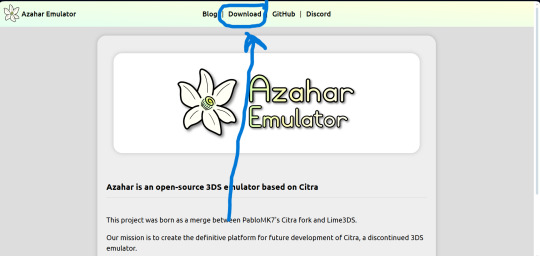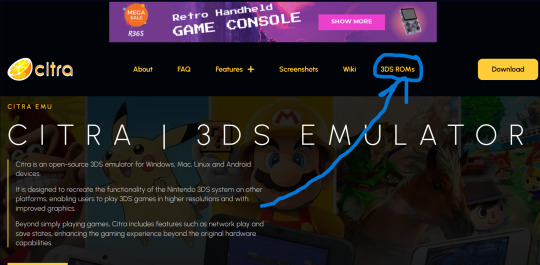#android studio emulator
Explore tagged Tumblr posts
Text
How to Run Android Apps on Windows with BlueStacks
When Microsoft introduced the Windows Subsystem for Android (WSA) many people were happy because the system allowed them to run native Android apps on Windows System. You can check this to know how to Install Windows Subsystem for Android (WSA). But it is no longer news that Microsoft will be ending WSA support on March 5th, 2025. Despite this news, we still have another way or options to run…

View On WordPress
#Android#android emulator#android studio#android studio emulator#app#App Service Environment#bluestacks#Microsoft Windows#Windows#Windows 10#Windows 11#Windows Server#Windows Server 2016#Windows Server 2019
0 notes
Text

ao3 on the android studio phone emulator >:3
3 notes
·
View notes
Text
How to use the Android emulator on a macOS host for debugging in a virtual machine with Windows
I just blogged: How to use the #Android emulator on a #macOS host for debugging in a virtual machine with #Windows #adb #emulator #ssh #Parallels #VM #VirtualMachine #VS4Mac #Rider #VS2022 #VisualStudio #Debug #devlife #devProblems
Preface With .NET MAUI now available, I started to port my Xamarin.Forms applications to the new cool bits. The iOS version of my Fishing Knots app went quite smoothly, but I really had a lot of trouble with the Android version. First, I did not even get it to compile. After ironing out all the issues Rider was indicating, I finally got it compiling and was able to deploy it to the Android…

View On WordPress
#.NET MAUI#adb#Android#Debug#debugging#emulator#iOS#macOS#MAUI#Rider#SSH#Visual Studio#VS4Mac#xamarin#xamarin forms
0 notes
Text
In light of the recent Nintendo boycotts, I come bearing a gift
I'll copy/paste a message I've been sharing in discord servers
If you like Nintendo games but hate the company, today's your lucky day
This is totally illegal and you absolutely shouldn't do it because its wrong, so I'm gonna tell you exactly what to do so that you guys know not to do it!
You guys absolutely should not download Azahar Nintendo 3DS emulator and then go onto Citra-emulator.com to find old Nintendo DS and Nintendo 3DS games and then open the games through Azahar for to play free, including Tomodachi life, ACNH, The Sims 3, Nintendogs + Cats and Flipnote Studio.
You really shouldn't do this stuff its its illegal but if you did it, it would totally work and no one could stop you. Also I work in tech and virus scanned random files and they all came up clean so its safe but its still illegal don't do it................. (But you totally could and no one would stop you)
The Citra emulator doesn't work because the dev got hit with a lawsuit. He went on to work on Azahar. They say not to do this for legal protection, but it fully works.
As far as I know, these games do not have piracy barriers EXCEPT Tomodachi Life (A large red cross over the character faces). I have a debug file that fixes this. If you guys come across another game that has a barrier let me know and I'll search for a debug
Tutorial
Use this link to download the emulator
https://azahar-emu.org/ scroll all the way up to "Download". Download the version that corresponds with your system (Windows, Mac, Linux, Android)

And this link to download the game files
https://citra-emulator.com/ Scroll all the way up to "3DS ROMS". There is an incomplete but still extensive collection of games, both Japanese and English titles as well as Pokemon ROM hacks

On Windows, place the game files on your desktop and open them. It will ask you what app you want to open the file with. Choose "Select app on PC", search for Azahar and select it then press "okay"
(I'm not 100% on the process for Linux and Mac but I'm sure they're similar. On Android I know for certain they are)
You'll know if it works because the game icons will switch from a paper file to the Azahar flower

Once you see these flowers, you are all set and ready to play!
And here is the error fix for Tomodachi life. Download this file and open it like normal. It will ask you what app you wish to open it with. Open it with Azahar.
Don't panic! A lowkey scary looking dialogue box will pop up for a moment and text will very quickly load onto it. This is Azahar reading the file and saving the commands. It will very quickly close itself. Once that window closes itself, you're all set to open Tomodachi Life and play like normal!
https://drive.google.com/file/d/1_BQfoGycmpaaOvBEm29LU1FKqy7cgG6j/view?usp=drive_link
(This is an upload from my own personal google drive account. I pinkie promise there's no virus on this. and if there is you have full permission to yell at me and put me on blast)
and that's everything I got! Feel free to reblog with other sites or tips you have! <3 Have fun lovelies!
#toby rambles#stardew valley#creepypasta#mouthwashing#hatsune miku#thats not my neighbor#animal crossing#The sims#simblr#tamagotchi#emulation#game emulator#activism#boycott nintendo#vocaloid#epic the musical#epic telemachus#epic odysseus#epic penelope#Stardew valley#stardew#sdv elliott#sdv sebastian#sdv haley
85 notes
·
View notes
Text
South Park Games (Info Post)
this is a blog post about the official South park games , this will include some general info on the games , plus where you can play/buy them , some of these are not games you can play on their original platform so ill include emulators for what I can

South park ( December 21, 1998 )
Developed by Iguana Entertainment/Appaloosa Interactive
Published by Acclaim Entertainment
Distributed by Comedy Central
came out for Nintendo 64 in 1998
came out for Windows and PlayStation in 1999
first-person shooter , it has both a single player and multiplayer mode
N64 emulator
PlayStation emulator

South park : Chef's Luv Shack (October 12, 1999)
Developed by Acclaim Studios AustinPublished by Acclaim EntertainmentDistributed by Comedy Central
came out for N64 , Dreamcast , PlayStation , and Windows in 1999
Game show style party game
N64 emulator
PlayStation emulator

South Park Rally (January 5 , 2000)
Developed by Tantalus Interactive
Published by Acclaim Entertainment
Distributed by Comedy Central
came out for N64 , Dreamcast , PlayStation and windows in 2000
Simple Racing game
N64 emulator
PlayStation emulator

South park Lets go Tower Defense Play (October 7 , 2009)
Developed by Doublesix, in collaboration with South Park Digital Studios and Xbox Live Productions
Published by Xbox Game Studios
came out only for the Xbox Live Arcade which was a service on Xbox 360
Tower Defense game
very little info of this game exists online

South park : Tenorman's Revenge (March 30 , 2012)
Developed by Other Ocean Interactive, in collaboration with South Park Digital Studios
Published by Xbox Game Studios
came out for Xbox Live Arcade
Platformer

South park : The Stick of Truth (March 4 , 2014)
Developed by Obsidian Entertainment, in collaboration with South Park Digital Studios
Publishing rights purchased by Ubisoft due to THQ filing for bankruptcy, resulting in the game's release being delayed
Came out for Windows , Playstation 3 , Xbox 360 in 2014
came out for Nintendo switch, Playstation 4, Xbox one in 2018

South park : The Fractured But Whole( October 17 , 2017 )
Developed by Ubisoft San Francisco, in collaboration with South Park Digital Studios, Ubisoft Osaka, Massive Entertainment, Ubisoft Annecy, Ubisoft Reflections, Blue Byte, and Ubisoft Quebec.
came out for Microsoft Windows, PlayStation 4, Xbox One in 2017 . came out for Nintendo Switch in 2018

South park : Phone Destroyer (November 9 , 2017)
Developed by Ubisoft RedLynx, in collaboration with Ubisoft Pune and South Park Digital Studios
Came out for IOS and Android in 2017

South park : Snow Day (March 26 ,2024)
Developed by Question, published by THQ Nordic, in collaboration with South Park Digital Studios
Comes out for Microsoft Windows, Nintendo Switch , PlayStation 5, Xbox Series X/S
and an honorable mention to

South park : pinball (1999?)
this is an add-on/DLC to PinballFX 2 & Zen Pinball 2 . also made into a stand only phone game during somewhere around 2014 but was removed due to legal issues
#south park#video games#games#south park game#eric cartman#kyle broflovski#stan marsh#kenny mccormick#old games#effort#effortpost#information#infodump#autism#not shitpost#autisic#gaming
34 notes
·
View notes
Text
Related: Android Studio, the program I have to use for the class, fucking DEVOURS my computer's ram, so much so that it finally pushed me to upgrade my ram. Turns out an 8GB ram stick is only $20, and I just so happened to have a pair of $10 amazon gift cards from my birthday, so looking forward to that arriving.
I just spent the past 2 days struggling with a mobile development project. It's one of the only times in my college career that I've gone over a deadline. And as I open up the class webpage to check the late work policy, I'm greeted with an announcement saying that a lot of people have been struggling with this project and so the deadline has been extended by 4 days. Fucking RELIEF
#original#i don't usually watch my ram usage but right now it's at 50% out of 8gb#when i have android studio open it's around 75-95% especially when i'm running the phone emulator#turns out that trying to run a miniature computer inside your computer is really hard!#but even without the emulator it takes so much memory#i don't know exactly how ram works but i looked it up and typically 8gb is the bare minimum and not suitable for resource-intensive program#and there's all this “adding more ram can improve your computer's responsiveness” and such#so i figure that even though it's not hitting 100% adding more ram will probably help? i think?#like. giving the computer more breathing room or something#i don't know how ram works#anyway the ram is arriving in a week but fortunately it'll get here before the next assignment is due#UPDATE: Looked some stuff up and it turns out that ram that isn't technically “in use” can still store data that might be used later#and looking at my ram usage. yeah. yeah it's full of cached standby data#definitely going to benefit from doubling my ram
2 notes
·
View notes
Text
Which tools can help speed up the Android app development process?
Android App Development Services

In today's modern digital world, the businesses seek for quick time turnaround, without compromising the app's quality and standards as the best alternative. To meet this challenge and face them with extreme care, developers and coders tend to be reliable on specialized tools that streamline each phase of Android app development. Resources tends to aid and boost up their overall operating efficiency, reduce the bugs, and speed up the current development lifecycle.
Essential Tools for Android App Development -
1. Android Studio:
The official and reliable IDE for Android app development, the android studio offers and assist with everything the developers need in one place. With a brilliant code editor, real-time previews, and built-in emulators, it efficiently speeds up writing, testing, and deploying apps.
2. Kotlin and Java Development Kits:
Kotlin kits is one of the commonly used PL for Android apps due to its concise syntax and full interoperability with Java as it supports ease in operations and functioning. As the Kotlin kit in Studio makes the app development process cleaner and quick, minimizing common code errors and usual flaws that rise.
3. Firebase:
Firebase offers a complete backend solution with expertise, including authentication, database, crash reporting, and performance monitoring. As it simplifies the building process from server-side logic and helps speed up the development stage without managing the infrastructure.
4. GitHub & Bitbucket:
Version control tools like GitHub and Bitbucket allow and grant permissions to multiple developers at a time to collaborate efficiently. As these platforms assure smooth code integration and help the teams to detect issues early in development.
5. Gradle:
Gradle tool is one of the powerful build automation tools that helps manage dependencies and automate the build process with its implementation or adaptation into the system. As it is a process to lower down the build times is considered to be vital, which is essential for quick Android app development and smooth operations as the best process.
6. Genymotion:
Genymotion offers fast Android emulation with various device configurations. As iIt's perfect for testing and checking the app's performance across all the different screen sizes and Android versions without any physical devices presence or requirement as its consists features that are made to adaptable and flexible for that too.
7. LeakCanary:
This tool helps detect memory leaks in real-time. By integrating and merging out it early into your project, the developers can maintain the app's stability and reduce the time spent debugging issues later with its implementation.
Expert Support for Efficient Development -
Top companies like Suma Soft, IBM, Cyntexa, and Cignex leverage these tools to deliver high-quality Android apps faster. Their deep experience in Android app development ensures your app is built quickly and performs reliably across devices and user conditions.
#it services#technology#saas#software#saas development company#saas technology#digital transformation
2 notes
·
View notes
Text
VOCALOID6 default voicebank headcanons under the cut :)

AKITO
overdressed prep; kind of guy who wore a 2 piece suit to high school
very into his work, takes himself too seriously
has very strong opinions on other vocal synths ranging from trusted colleague to fierce rival
no one else is keeping up with these

ALLEN
quiet and polite, not one for small talk
considered the most professional of the V6 loids in the studio; takes his musical career very seriously
understated but very on-point fashion sense— casual attire, t-shirts, sneakers, etc. but if you google each piece his outfit is worth $10,000

HARUKA
the “Gumi of the group”
highly successful
terminally offline
doesn’t know girls can kiss other girls

SAKURA
no one knows what’s going on with Sakura
she has a special cellphone usually only owned by high-level fbi types for network security reasons
why does she have that
fun-loving idol girl who always has all the newest stuff
Akito is afraid of her
he should be

SARAH
unofficially “the face” of the V6 studio brand. she’s not thrilled about it
is a HUGE sweet ann fan, tries rly hard to emulate the early engloids out of respect

SHION
2000s alt girl
NO hipsters
NO preps
except for sakura, her best friend to everyone else’s surprise

ASAHI
you know phineas and ferb? he’s ferb
one of sakura’s moles that feed her gossip and drama
no one’s ever seen him enter a room, he’s just there when you look back

LUCAS
one of Allen’s most consistent collaborators, tends to bring in big numbers
oblivious frat guy type personality. well maybe not that bad
hangs out with Taku a lot and has no clue at all that Taku dislikes him
shows up at your house at midnight to ask if you wanna watch him crash his car into an abandoned building

MICHELLE
chill stoner type who purposefully sticks to smaller indie venues
also once after a show rly late at night she admitted to having killed someone before? and you can’t tell if she was joking??

TAKU
Michelle’s “cousin” whatever that means for androids
bc Lucas is best friends with Michelle, Taku is constantly having to interact with him. he does not like this
every single article of clothing he owns is thrifted and slightly too big
6 notes
·
View notes
Text
I haven't done this but here is my guess: There is a program called Android Studio that's used to develop Android apps. It comes with what's called a simulator which is basically an android phone emulator. You can run several as long as your computer can handle it. So, you can have multiple phones running on your computer, download apps on them, etc. idk if you need multiple android/Google accounts to get multiple nugget deals from McD's but that's easy. And Android Studio is free. No programming knowledge required, although getting the simulators running may be a bit of a hassle if you've never done it.
Apple's version of this whole thing is called XCode, it has iPhone simulators. Not sure what the app store situation is there though.

#hooray my work knowledge is actually useful#hope it works for someone#also to me this doesn't count as a scam. it's a simple loophole.
16K notes
·
View notes
Text
Emulator vs. Real Device Testing: What Should You Choose?

In our first article of the Mobile Application Testing series, we introduced the core concepts of mobile testing—highlighting how mobile apps must be tested across multiple platforms, screen sizes, networks, and user behaviors. We also emphasized how fragmented mobile environments increase the complexity of quality assurance, making robust mobile device testing strategies essential.
Building on that foundation, this blog focuses on one of the most critical decisions mobile testers face:
Should you test your app using emulators or real devices?
Both approaches serve essential roles in mobile QA, but each comes with its own set of advantages, limitations, and ideal use cases. Understanding when and how to use emulator vs real device testing can make your testing strategy more effective, scalable, and cost-efficient.
What is Emulator Testing?
An emulator is a software-based tool that mimics the configuration, behavior, and operating system of a real mobile device. Developers often use Android emulators (from Android Studio) or iOS simulators (from Xcode) to create virtual devices for testing purposes.
These emulators simulate the device’s hardware, screen, memory, and operating system, enabling testers to validate apps without needing physical smartphones or tablets.
✅ Advantages of Emulator Testing
Cost-Effective No need to invest in purchasing or maintaining dozens of physical devices.
Quick Setup Developers can quickly spin up multiple virtual devices with various screen sizes, OS versions, or languages.
Integrated Debugging Tools Emulators are deeply integrated with IDEs like Android Studio and Xcode, offering extensive logs, breakpoints, and performance analysis tools.
Faster for Early Testing Ideal for initial development phases when functionality, UI alignment, or basic workflows are being verified.
❌ Limitations of Emulator Testing
Lack of Real-World Accuracy Emulators can’t replicate real-world conditions like varying network speeds, incoming calls, push notifications, or sensor behavior.
Poor Performance Testing Capability Metrics like battery drainage, CPU usage, and memory leaks are not accurately reflected.
Incompatibility with Some Features Features relying on Bluetooth, NFC, camera APIs, or fingerprint sensors often fail or behave inconsistently.
What is Real Device Testing?
Real device testing involves testing mobile applications on actual smartphones or tablets—physical devices users interact with in the real world. This method allows teams to validate how an app performs across different OS versions, device models, network types, and environmental factors.
✅ Advantages of Real Device Testing
True User Experience Validation You get a real-world view of app performance, responsiveness, battery usage, and usability.
Reliable Performance Testing Tests such as scrolling lag, animations, and touch responsiveness behave authentically on real devices.
Sensor and Hardware Interaction Testing features like GPS, camera, gyroscope, accelerometer, and biometric authentication is only possible on real hardware.
Detect Device-Specific Bugs Certain bugs appear only under specific hardware or manufacturer configurations (e.g., MIUI, Samsung One UI), which emulators might not catch.
❌ Limitations of Real Device Testing
Higher Cost Maintaining a physical device lab with hundreds of devices is expensive and often impractical for small or mid-sized teams.
Manual Setup and Maintenance Devices must be updated regularly and maintained for consistent results.
Scalability Issues Executing automated test suites across many real devices can be time-consuming without proper infrastructure.
When Should You Use Emulators or Real Devices?
The most effective mobile testing strategies combine both approaches, using each at different phases of the development lifecycle.
✔ Use Emulators When:
You’re in the early development phase.
You need to test across multiple screen resolutions and OS versions quickly.
You're writing or debugging unit and functional tests.
Your team is working in a CI/CD environment and needs quick feedback loops.
✔ Use Real Devices When:
You're close to the release phase and need real-world validation.
You need to verify device-specific UI bugs or performance bottlenecks.
You’re testing features like Bluetooth, GPS, camera, or biometrics.
You're evaluating battery consumption, network interruptions, or gesture interactions.
Bridging the Gap with Cloud-Based Testing Platforms
Maintaining a large in-house device lab is costly and hard to scale. This is where cloud-based mobile testing platforms help. These services provide access to thousands of real and virtual devices over the internet—letting you test across multiple platforms at scale.
🔧 Top Platforms to Know
1. BrowserStack
Offers instant access to 3,000+ real mobile devices and browsers.
Supports both manual and automated testing.
Integration with Appium, Espresso, and XCUITest.
Real-time debugging, screenshots, and video logs.
2. AWS Device Farm
Lets you test apps on real Android and iOS devices hosted in the cloud.
Parallel test execution to reduce test time.
Supports multiple test frameworks: Appium, Calabash, UI Automator, etc.
Integrates with Jenkins, GitLab, and other CI tools.
3. Sauce Labs
Offers both simulators and real devices for mobile app testing.
Provides deep analytics, performance reports, and device logs.
Scalable test automation infrastructure for large teams.
Final Thoughts: What Should You Choose?
In reality, it’s not Emulator vs Real Device Testing, but Emulator + Real Device Testing.
Each serves a specific purpose. Emulators are ideal for cost-effective early-stage testing, while real devices are essential for true user experience validation.
To build a reliable, scalable, and agile mobile testing pipeline:
Start with emulators for fast feedback.
Use real devices for regression, compatibility, and pre-release validation.
Leverage cloud testing platforms for extensive device coverage without infrastructure overhead.
At Testrig Technologies, we help enterprises and startups streamline their mobile QA process with a combination of emulator-based automation, real device testing, and cloud testing solutions. Whether you're launching your first app or optimizing performance at scale, our testing experts are here to ensure quality, speed, and reliability.
0 notes
Text
Netflix Clone Business Model in 2025: What Every OTT Startup Should Know
In 2025, the OTT streaming market is booming more than ever. With Netflix leading the charge, entrepreneurs are increasingly eyeing Netflix clone Business platforms as a gateway to tap into this digital entertainment revolution. However, building a Netflix clone is not just about replicating design — it’s about implementing a robust business model that can scale, engage users, and monetize effectively.

The OTT Landscape in 2025
The global OTT video market is projected to exceed $400 billion by 2027, with mobile viewership, AI-based personalization, and regional content driving growth. The demand for niche platforms, ad-supported models, and interactive experiences is at an all-time high.
Netflix’s model has evolved to include:
Tiered pricing plans
Ad-supported subscriptions
Gaming content
Localized productions
These serve as foundational strategies to emulate and adapt in a Netflix clone.
Key Components of the Netflix Clone Business Model
1. Content Licensing & Originals
A successful Netflix clone needs two pillars: licensed content and original productions. In 2025:
Original content offers higher ROI and brand value.
Local and regional productions enhance reach and retention.
Tip: Form early partnerships with indie creators and studios to source unique, exclusive content.
2. Monetization Models
Netflix clones must offer flexible monetization options. Choose or combine the following based on your audience:
ModelDescriptionExample PlatformsSVOD (Subscription)Monthly or annual fee for unlimited accessNetflix, Disney+AVOD (Ad-supported)Free access supported by advertisementsTubi, YouTubeTVOD (Pay-per-view)Rent/buy specific contentApple TV, Google PlayHybridCombines free (ad) and premium (subscription) modelsHulu, Peacock
3. Tech Infrastructure
A Netflix clone must prioritize:
Scalable cloud infrastructure (AWS, Azure, GCP)
AI-driven recommendation engine
Multi-platform compatibility (Web, Android, iOS, Smart TVs)
Offline viewing & DRM protection
Don’t forget: buffer-free streaming and responsive UX are deal-breakers in 2025.
4. User Acquisition & Retention Strategy
In 2025, it’s not enough to build a platform — you need a community. Consider:
Free trial periods
Referral bonuses
Interactive elements (polls, watch parties, fan forums)
Push notifications based on watch behavior
Retention thrives when users feel recognized and entertained.
Revenue Streams to Diversify Income
Diversify beyond just subscriptions with:
Ads (AVOD): Dynamic video ads and sponsored content.
Merchandise: Branded products from popular shows.
Licensing: Sell original content to other networks.
In-app purchases: Paywalls for premium episodes or features.
Gaming content integration (like Netflix’s push into mobile games).
Analytics and AI: The Backbone of Strategy
Leverage AI-based analytics to:
Track content performance
Segment users by behavior
Predict churn
Optimize pricing
Tools like Mixpanel, Amplitude, and BigQuery are key to smart decisions.
Success Tips for Launching in 2025
Start lean: Launch an MVP targeting a specific niche (e.g., K-drama fans, fitness content).
Use white-label OTT platforms like Miracuves’ Netflix Clone solution to fast-track development.
Prioritize mobile-first UX — 70%+ of OTT content is consumed on mobile.
Stay compliant: With increasing global scrutiny, ensure GDPR, COPPA, and local regulations are met.
Experiment with AI: Dynamic pricing, personalized trailers, voice-based navigation — all powered by AI.
Final Thoughts
The Netflix clone business model in 2025 demands more than replication — it requires innovation, flexibility, and audience obsession. By adopting the right content strategy, monetization mix, and user experience enhancements, OTT startups can not only compete but thrive in this booming sector.
This is where Miracuves steps in.
With years of experience in building robust, scalable OTT platforms, Miracuves delivers custom Netflix clone solutions that are not only technically sound but also aligned with current and future market demands. From content delivery and user analytics to monetization and localization — Miracuves equips you with everything needed to lead in the OTT space.
Whether you’re a startup or an established media house, Miracuves can accelerate your OTT journey with innovation, speed, and strategic support.
👉 Contact Miracuves today to build the next big Netflix alternative.
0 notes
Text
Top 5 Android Institutes: Master App Development with the Right Training

In today’s digital-first world, mobile applications have become the backbone of almost every business. Android, being the most widely used operating system globally, presents enormous career opportunities for aspiring developers. Whether you’re a student, an IT professional, or a tech enthusiast, enrolling in one of the Top 5 Android Institutes can be the stepping stone toward a successful career in mobile app development.
Choosing the right Android training institute matters because the field is both vast and evolving. From understanding Java or Kotlin to building complex user interfaces and integrating cloud databases, a comprehensive course helps you learn both fundamental and advanced app development skills. A well-structured Android training program equips you with hands-on experience, real-time project exposure, and the latest development tools such as Android Studio and Firebase.
Let’s take a closer look at the top 5 institutes in India where you can kickstart or elevate your Android development journey.
1. CBITSS, Chandigarh
CBITSS is a leading name in technical education and skill development in Chandigarh. The Android training program at CBITSS focuses on industry-relevant skills, ensuring that learners not only gain theoretical knowledge but also become proficient in real-world app development.
Key Features:
Certified and experienced trainers
Real-time Android projects using Java and Kotlin
Hands-on practice with Android Studio and emulator tools
Firebase and API integration training
Job-oriented course structure with placement assistance
Flexible batch timings and weekend classes
CBITSS provides a strong foundation and practical exposure, making it ideal for beginners as well as professionals looking to shift to Android development.
2. TechnoGlobe, Jaipur
TechnoGlobe has earned a strong reputation for its career-oriented IT programs. Their Android development course offers extensive learning, from UI/UX designing to developing full-fledged mobile apps for the Google Play Store.
Key Features:
Industry-recognized certification
Training on XML, Java, SQLite, and Firebase
Live projects and weekly assessments
Resume building and soft skills workshops
Internship opportunities with partner companies
TechnoGlobe focuses on overall development, helping students prepare for interviews while also polishing their technical abilities.
3. Apponix Academy, Bangalore
Based in Bangalore, Apponix Academy offers professional Android training with personalized mentoring. The institute’s curriculum is designed by experienced developers who understand market demands and skill gaps.
Key Features:
40+ hours of classroom and practical sessions
Google-certified trainers
Placement tie-ups with IT firms and startups
Live app-building experience
Doubt-clearing sessions and post-course support
Apponix Academy is ideal for students who want to start from scratch and eventually work in app-based product companies or startups.
4. Inventateq, Bangalore & Chennai
Inventateq has a long-standing presence in the training space and is known for its detailed and job-focused Android development courses. Their Android module integrates Java, Kotlin, SQLite, Google Maps, and APIs to ensure a holistic learning experience.
Key Features:
100% job support with interview preparation
Real-time assignments and app deployment on Play Store
Access to e-learning materials and recorded classes
Training by industry professionals with 5+ years of experience
Internship certificates and project documentation
Inventateq emphasizes real-world development, allowing students to work on client-like projects during training.
5. NIIT, Pan-India
NIIT is one of India’s most reputed training institutions, and their mobile app development course includes an in-depth Android development module. NIIT’s curriculum is structured, recognized, and perfect for learners aiming for corporate job roles.
Key Features:
Modular learning with hands-on exercises
Training in Android SDK, user interface design, and multimedia APIs
Online and offline learning options
Regular assessments and feedback
Placement partnerships with leading tech companies
NIIT’s legacy and quality training make it a strong choice for long-term learning and career support.
Importance of Choosing the Right Android Institute
Not all Android training programs are created equal. To truly become job-ready, you must pick an institute that provides:
Project-Based Learning: Training with actual app-building tasks simulates real job scenarios.
Experienced Faculty: Trainers with industry backgrounds bring valuable insights into best practices.
Up-to-Date Curriculum: With Android frequently updating, a modern curriculum is crucial.
Certification: Institutes offering recognized certifications provide an edge in job applications.
Placement Support: Resume workshops, mock interviews, and job referrals boost employment chances.
Enrolling in any of the top 5 institutes listed above ensures that you not only learn Android development but also get the career push you need to land a job or freelance project.
A Glimpse into PHP Training
While Android development is an excellent career choice, PHP also remains one of the most widely used programming languages, especially in web development. PHP is open-source, server-side, and perfect for developing dynamic websites and applications. A good PHP training course covers core PHP, MySQL, Laravel framework, session handling, and security practices.
PHP continues to be a backbone technology behind platforms like WordPress, Joomla, and Magento. It’s ideal for students who want to explore backend web development, API creation, and eCommerce site development. Institutes like CBITSS also offer high-quality PHP training programs for those looking to specialize in full-stack development.
Final Thoughts
Android development is a future-proof career choice with endless possibilities in app-based businesses, gaming, eCommerce, healthcare, education, and more. Learning from the Top 5 Android Institutes ensures that you get quality mentorship, hands-on skills, and valuable certifications that can set you apart in the job market.
Whether you want to work for a tech company, freelance for international clients, or build your own app, starting with proper training is essential. Choose an institute that matches your learning goals and get ready to create the next big mobile application!
#AndroidDevelopment#AndroidTraining#LearnAndroid#AppDevelopment#MobileAppDevelopment#AndroidCourse#CodingLife#JavaForAndroid
0 notes
Text
5 Key Differences Between Native and Cross-Platform App Development
In the realm of mobile application creation, businesses and developers face a crucial decision: to build a native app tailored for a specific operating system (OS) or a cross-platform app that runs on multiple OS with a single codebase.
Each approach presents a unique set of advantages and disadvantages, directly impacting performance, cost, time-to-market, user experience, and access to device features. For an Android app development company or any development firm, understanding these fundamental differences is paramount to selecting the strategy that best aligns with a project's goals and resources.
Here are 5 key differences between native and cross-platform app development:
1. Performance and Responsiveness
Perhaps the most significant differentiator, performance refers to how fast and smoothly an app operates.
Native App Development: Native apps are built using the specific programming languages and tools provided by the OS vendor (e.g., Kotlin/Java with Android Studio for Android, Swift/Objective-C with Xcode for iOS). This direct interaction with the platform's APIs and hardware allows native apps to achieve the highest levels of performance and responsiveness. They are optimized to leverage device resources efficiently, resulting in buttery-smooth animations, rapid load times, and minimal latency. This is particularly crucial for graphics-intensive games, complex enterprise applications, or apps requiring real-time data processing.
Cross-Platform App Development: Cross-platform apps are developed using frameworks like React Native, Flutter, or Xamarin, which allow a single codebase to be deployed on both Android and iOS. While these frameworks have made significant strides in performance, there's often an additional layer between the app's code and the native OS. This layer can sometimes introduce a slight overhead, potentially leading to marginally slower performance or less fluid animations compared to a truly native app. For simpler applications or those that are not heavily reliant on complex graphics or intense computations, this difference might be negligible.
Key Takeaway: Native apps generally offer superior performance and responsiveness due to direct platform optimization.
2. User Experience (UI/UX) and Platform Consistency
The user experience encompasses how users interact with an app, including its look, feel, and navigation.
Native App Development: Native apps inherently follow the design guidelines and conventions of their respective platforms (e.g., Google's Material Design for Android, Apple's Human Interface Guidelines for iOS). This means that a native Android app will feel distinctly "Android-like" and an iOS app will feel "iOS-like," providing a familiar and intuitive experience for users of that specific OS. Developers have full access to native UI components, gestures, and navigation patterns, allowing for a highly polished and consistent user experience that aligns perfectly with the device's ecosystem.
Cross-Platform App Development: Cross-platform frameworks aim to provide a near-native look and feel. Some (like Flutter) achieve this by rendering their own UI components, offering pixel-perfect control, which can lead to a consistent brand experience across platforms. Others (like React Native) bridge to native UI components. However, achieving perfect platform consistency can sometimes be challenging, requiring platform-specific tweaks. While efforts are made to emulate native UI/UX, subtle differences in component behavior or navigation patterns might be noticeable to discerning users.
Key Takeaway: Native apps provide a truly platform-specific and optimized UI/UX, while cross-platform apps strive for consistency across platforms, sometimes at the expense of absolute native fidelity.
3. Access to Device Features and APIs
Modern smartphones are packed with sophisticated hardware and software features, from cameras and GPS to accelerometers, NFC, and biometric sensors.
Native App Development: Native apps have unrestricted and immediate access to all device features and APIs. Developers can fully leverage the latest hardware capabilities, utilize advanced sensor data, implement cutting-edge machine learning models directly on the device, and integrate seamlessly with OS-level features like push notifications, Siri/Google Assistant, or secure enclaves. When new OS features are released (e.g., a new augmented reality API), native developers can integrate them almost immediately.
Cross-Platform App Development: Cross-platform frameworks provide plugins or bridges to access many common device features. However, direct access to highly specialized or newly released native APIs might be limited or require custom native module development. This means that if an app relies heavily on niche hardware features or needs to adopt the absolute latest OS functionalities as soon as they are released, a cross-platform approach might involve waiting for framework updates or building complex workarounds.
Key Takeaway: Native apps offer full and immediate access to all device features and the latest OS APIs, providing greater flexibility for feature-rich applications.
4. Development Cost and Time-to-Market
These are often the most influential factors for businesses, particularly for startups or those with budget constraints.
Native App Development: Building separate apps for Android and iOS means developing two distinct codebases, using different programming languages and development teams (e.g., a Kotlin team for Android and a Swift team for iOS, as an Android app development company would typically employ). This "double development" typically translates to higher overall development costs and a longer time-to-market. Maintenance and updates also require separate efforts for each platform.
Cross-Platform App Development: The primary allure of cross-platform development is the "write once, run anywhere" philosophy. A single codebase significantly reduces development time and costs. A smaller, unified team can work on both versions of the app simultaneously. This faster time-to-market is highly advantageous for quickly validating an idea, reaching a broad audience with an MVP (Minimum Viable Product), or for projects with limited budgets. Maintenance and updates are also streamlined, as changes to the single codebase reflect on both platforms.
Key Takeaway: Cross-platform development generally offers lower development costs and a faster time-to-market due to code reusability.
5. Maintainability and Future-Proofing
The long-term viability and adaptability of an app are crucial considerations.
Native App Development: While initially more resource-intensive, native apps can offer greater long-term stability and easier maintenance for platform-specific updates. Developers have direct control over the platform's nuances, leading to fewer unexpected bugs arising from framework updates. Access to direct support from Apple and Google, along with comprehensive documentation, aids in resolving issues. However, significant OS updates may require substantial adjustments to both codebases.
Cross-Platform App Development: A single codebase simplifies ongoing maintenance as bug fixes and feature additions only need to be implemented once. However, dependency on the cross-platform framework means developers are at the mercy of the framework's update cycle for new OS features or bug fixes related to the bridging layer. If the framework lags in adopting new platform features, the app might be unable to leverage them until the framework is updated. There's also a potential risk if the framework loses community or vendor support over time.
Key Takeaway: Native apps can offer more granular control and immediate access to OS updates, while cross-platform apps provide streamlined maintenance for shared logic, with a dependency on framework updates.
Choosing the Right Approach
The decision between native and cross-platform development is not one-size-fits-all. An Android app development company would consider factors such as:
Budget and Timeline: If cost-effectiveness and rapid time-to-market are paramount, cross-platform is often the stronger choice.
Performance Requirements: For high-performance apps (e.g., gaming, AR/VR, complex animations), native development is typically superior.
Feature Set: If the app relies heavily on unique device features or needs to integrate deeply with the OS, native development provides full access.
User Experience Expectations: For a truly authentic and platform-consistent user experience, native is preferred.
Long-Term Vision: Consider the app's projected lifespan, anticipated updates, and whether future scaling might involve breaking down into microservices or leveraging specific native features.
0 notes
Text
“How RHosting Helps Developers Run Heavy Software on Lightweight Devices”
In an era of digital nomadism and lean tech stacks, many developers prefer lightweight laptops and minimal setups. But development often demands heavy-duty software—IDEs like Visual Studio, data analysis tools, virtual machines, container platforms, and more. The dilemma? Lightweight devices often can’t handle the workload.
That’s where RHosting’s smart RDP solution becomes a game-changer.
🧠 The Challenge: Power-Hungry Tools on Underpowered Hardware
Developers often face:
Limited CPU/RAM on personal machines
High-latency or lag with traditional remote tools
Inability to run resource-intensive IDEs, emulators, or databases locally
Security risks when transferring sensitive code or client data
This makes coding on the go—or even from home—frustrating and inefficient.
🚀 The RHosting Solution: Power in the Cloud, Access Anywhere
RHosting turns any lightweight laptop or tablet into a development powerhouse by offloading compute-intensive tasks to high-performance cloud Windows servers.
Here’s how it works:
⚙️ 1. High-Performance Cloud Servers
Spin up a cloud-based Windows environment with:
Multi-core CPUs
Generous RAM and SSD storage
Preinstalled dev tools or full customization
GPU-accelerated options (on request)
This means you can run VS Code, Android Studio, Docker, Jupyter Notebooks, or even data-heavy scripts without taxing your personal device.
🔐 2. Secure, Low-Latency Remote Access
Unlike traditional RDP, RHosting uses proprietary protocols optimized for real-time responsiveness and security:
Encrypted sessions with MFA
Fast frame rendering, even on low bandwidth
Clipboard, file transfer, and peripheral support
Developers can code, debug, and deploy as if they were sitting in front of a powerful desktop—from a Chromebook or tablet.
🛠 3. Application-Level Access (Only What You Need)
RHosting lets users access only specific apps or environments, reducing distractions and security risks.
Example: A front-end dev can access Figma, a browser, and VS Code. A data engineer gets Jupyter, Python, and data folders—nothing more.
📂 4. Folder-Level Permissions for Teams
Collaborating on a project? You can assign custom access to codebases, test environments, and shared folders—great for dev teams, agencies, or open-source contributors.
💡 Ideal Use Cases
Freelance developers working across devices
Students and coding bootcampers without high-end laptops
Remote teams collaborating on shared codebases
Enterprise developers with strict security policies
🧩 Real World: A Developer’s Day with RHosting
Log in from a thin-and-light laptop
Launch a remote Windows server with all dev tools preloaded
Run a heavy build or simulate a test environment
Save work to cloud storage, shut down server to save costs
Resume from any device—no sync issues, no lag
🎯 Conclusion: Light Device, Heavy Performance
With RHosting, your hardware no longer limits your coding potential. Whether you're building the next big app or debugging legacy systems, you can access enterprise-grade compute power securely from anywhere.
So if you’re tired of hearing your laptop fans scream every time you hit “build,” it’s time to switch to RHosting—because the smartest developers know where to offload their load.
0 notes
Text
The Future of Mobile Development: Android, iOS, Cursor, and Windsurf in 2025
Why Android and iOS Still Dominate

Android and iOS hold a combined 98% market share in mobile operating systems, making them the go-to platforms for developers. Android’s open-source flexibility lets devs customize everything from UI to backend integrations, perfect for diverse devices like Samsung Galaxy or budget-friendly Xiaomi phones. Meanwhile, iOS’s tightly controlled ecosystem ensures seamless performance on iPhones and iPads, with Swift offering a robust language for sleek, secure apps.
But the real magic happens when you pair these platforms with modern tools. Enter Cursor and Windsurf, two game-changers that streamline workflows and boost productivity.
Cursor: Your AI Coding Companion
If you haven’t tried Cursor, you’re missing out. This AI-powered code editor (built on VS Code’s foundation) is like having a senior developer over your shoulder. It autocompletes complex Android and iOS code snippets, suggests optimizations, and even debugs in real-time. For example, writing a Kotlin function for Android or a SwiftUI view for iOS becomes effortless with Cursor’s context-aware suggestions.
Imagine coding a cross-platform authentication flow in half the time—Cursor’s AI can predict your next lines, ensuring clean, maintainable code. It’s a must-have for solo devs or teams juggling tight deadlines.
Windsurf: Riding the Wave of Modern Frameworks
While less mainstream, Windsurf (assuming it’s a lightweight framework or tool) is making waves in mobile development. Designed for rapid prototyping, Windsurf lets developers build modular Android and iOS apps with reusable components. Think of it as a bridge between Flutter’s cross-platform ease and native performance.
Windsurf’s strength lies in its simplicity. You can spin up a Minimum Viable Product (MVP) for both platforms in days, not weeks. Its integration with tools like Cursor makes it even more powerful—AI suggestions align perfectly with Windsurf’s component-based structure, cutting development time further.
How to Get Started
Ready to dive into Android and iOS development with these tools? Here’s a quick roadmap:
Set Up Your Environment:
For Android, install Android Studio with Kotlin or Java.
For iOS, grab Xcode and learn Swift or SwiftUI.
Download Cursor for AI-assisted coding across both platforms.
Experiment with Windsurf:
Check out Windsurf’s documentation (or community forums if it’s niche) to scaffold your first app.
Use its modular components to prototype a simple app, like a to-do list or weather tracker.
Leverage High-Quality Resources:
For a deeper dive into modern mobile development, check out this comprehensive guide on building apps with AI tools and frameworks. It’s packed with tutorials and tips for beginners and pros alike.
Test and Iterate:
Use emulators in Android Studio or Xcode to test on virtual devices.
Deploy to TestFlight (iOS) or Firebase App Distribution (Android) for beta feedback.
Why This Matters in 2025
The demand for mobile apps is skyrocketing, with businesses racing to deliver seamless user experiences. Tools like Cursor and Windsurf empower developers to meet these demands without burning out. Whether you’re building a fintech app for Android or a health tracker for iOS, these technologies help you ship faster and smarter.
Plus, with AI and modular frameworks, you don’t need a massive team to compete. Solo devs and small studios can now rival big players, leveling the playing field.
Join the Mobile Dev Revolution
If you’re passionate about coding, 2025 is the year to master Android and iOS development. Start experimenting with Cursor for AI-driven productivity and Windsurf for rapid prototyping. Your next app could be the one that goes viral.
Got questions or want more tips? Drop a comment or reblog with your thoughts! And for more insights on mobile dev, visit this resource to stay ahead of the curve.
#mobiledevelopment #android #ios #cursor #windsurf #coding #tech #appdevelopment #programming
1 note
·
View note
Text
How to Build a Successful Career as a Flutter Developer?

Introduction to Flutter Development
What is Flutter? Flutter is an open-source framework created by Google that allows developers to build apps for multiple platforms using a single codebase. It’s designed to simplify the process of creating high-quality applications for mobile devices, web, and even desktop. With Flutter, you can craft visually appealing and functional apps without needing separate setups for iOS and Android, making it a popular choice among developers worldwide.
Why Choose Flutter for App Development? Flutter stands out because it speeds up the app creation process while delivering smooth performance. Its ability to work across different platforms reduces effort and ensures consistency in design and functionality. Developers appreciate its rich library of customizable widgets, which help bring creative ideas to life quickly. Plus, businesses value Flutter for its cost-effectiveness and ability to reach users on various devices with one project.
Getting Started with Flutter
Setting Up Your Flutter Environment To begin your journey as a Flutter developer, you’ll need a proper workspace. Start by preparing your computer with a suitable operating system like Windows, macOS, or Linux. You’ll also need an editor, such as Visual Studio Code or Android Studio, to write and manage your code. Ensuring your system meets Flutter’s basic requirements is the first step toward building apps efficiently.
Installing Flutter SDK and Tools The Flutter Software Development Kit (SDK) is essential for coding and testing apps. Download it from the official Flutter website and follow the installation guide for your operating system. After that, set up additional tools like Dart, the programming language Flutter uses, and an emulator or physical device for testing. Once everything is in place, you’re ready to start exploring Flutter’s features.
Key Skills Required to Become a Flutter Developer
Core Programming Languages for Flutter Flutter relies heavily on Dart, a straightforward and efficient language. Learning Dart is a must, as it powers the framework’s functionality. Familiarity with basic programming concepts like variables, loops, and functions will also help you adapt quickly. While prior knowledge of languages like Java or Python isn’t required, it can ease your transition into Flutter development.
Knowledge of Mobile App Design Principles Creating apps isn’t just about coding; it’s also about how they look and feel. Understanding mobile design basics, such as layouts, navigation, and user interface elements, is key. Flutter’s widget system makes it easier to design, but knowing how to arrange components for a great user experience will set you apart as a developer.
Learning Flutter: Step-by-Step Guide
Beginner Resources for Learning Flutter New to Flutter? Start with beginner-friendly materials like official documentation, tutorials, and community guides available online. Platforms like YouTube and tech blogs offer simple explanations and walkthroughs. Joining developer forums or groups can also provide support and inspiration as you learn the ropes.
Building Your First Flutter App Once you grasp the basics, try creating a small app, like a to-do list or calculator. This hands-on practice helps you understand Flutter’s structure and workflow. Experiment with widgets, test your app on an emulator, and tweak it as you go. This first project is a practical way to build confidence and see results.
Tips for Mastering Flutter Development Consistency is vital when learning Flutter. Dedicate time daily to practice coding and explore new features. Focus on understanding how to solve common app-building challenges, like managing data or improving performance. Engaging with the Flutter community can also offer fresh ideas and solutions to enhance your skills.
Building Your Portfolio as a Flutter Developer
Importance of a Flutter Portfolio A strong portfolio showcases your abilities and helps you stand out to potential employers or clients. It’s a collection of your work that proves you can build functional, attractive apps. Having a portfolio demonstrates your practical skills and commitment to Flutter development.
What to Include in Your Portfolio? Include a variety of projects, such as simple apps, interactive tools, or creative designs you’ve built with Flutter. Highlight apps that solve real-world problems or show off unique features. Adding a brief description of each project’s purpose and the skills used will give context to your work.
Showcasing Your Projects Effectively Present your projects clearly, using screenshots or live demos if possible. Share them on platforms like GitHub or a personal website to make them accessible. Explain your approach and the tools you used, keeping it simple yet informative to impress viewers.
Finding Jobs as a Flutter Developer
Job Opportunities for Flutter Developers Flutter’s growing popularity has created demand for skilled developers. Companies in industries like tech, healthcare, and e-commerce seek Flutter experts to build cross-platform apps. Roles range from junior positions to senior developer jobs, offering diverse paths to explore.
Freelance vs Full-time Jobs Freelancing lets you work on short-term projects with flexibility, ideal if you enjoy variety and independence. Full-time roles, on the other hand, offer stability and benefits, often with larger teams and bigger projects. Weigh your preferences and career goals to choose the best fit.
Why Choose SkillonIT for Learning Flutter Development?
Key Benefits of SkillonIT’s Flutter Training Program SkillonIT provides a structured program to help you master Flutter development. It focuses on practical skills, guiding you from basics to advanced app-building techniques. The course emphasizes real-world applications, ensuring you’re job-ready upon completion.
Learning from Industry Professionals at SkillonIT SkillonIT connects you with experienced instructors who share insights from the tech field. Their guidance helps you understand industry trends and best practices, giving you an edge as a Flutter developer. This mentorship bridges the gap between learning and professional success.
Conclusion
Building a successful career as a Flutter developer is an exciting journey filled with opportunities. By starting with the basics, mastering essential skills, and showcasing your projects, you can position yourself for success in this fast-growing field. Flutter’s versatility and demand make it a smart choice for anyone eager to create impactful apps. Whether you choose freelancing or a full-time role, programs like SkillonIT can guide you with practical training and expert advice. Start Your Flutter Career with SkillonIT’s Expert Training!
0 notes